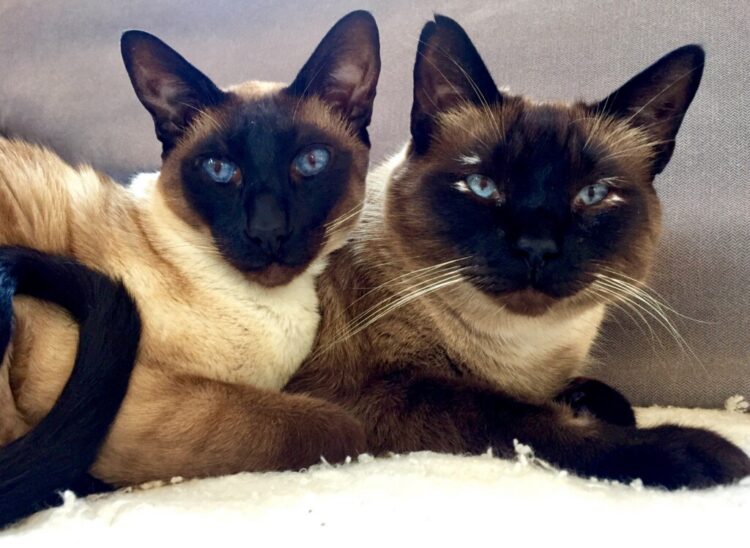
Guest post by Ingrid R. Niesman MS, PhD
During the first few months of 2022, I had two apparently healthy and happy Siamese boys. Until I didn’t.
Uli was diagnosed with asthma in January. Click here to read The Challenges of Treating Feline Asthma for his story.
Then, in March, heartbreak struck again. Big boy Paterson started vomiting. At first, it was just occasional, and we wrote if off as hairballs. By the third week of March, we became worried and scheduled a vet appointment.
On March 30th, my kind veterinarian called with devastating news after performing an ultrasound: Paterson had large and sinister growths, indicative of intestinal lymphoma (IL). Did we want to biopsy for a definitive diagnosis, or, given the rapid onset and extent of the disease, did we want to just provide palliative care? These are difficult decisions at the best of times, but with just a few hours to ponder, we knew what our choice would be.
I still feel like this was the best outcome for our Paterson, even if it meant losing him in six weeks instead of six months of possible questionable quality of life.
The pain of my loss has lingered. A year later, I am just now ready to pull my grief and my curiosity about the science of a dreaded feline disease together.
Looking back, I wish we knew more about the disease and had a clearer picture of therapies. Even so, I doubt we would have chosen a different option.The goal for this article, therefore, is providing the most current diagnostic tools and novel therapies for cats with intestinal lymphoma, something we badly needed at the time.
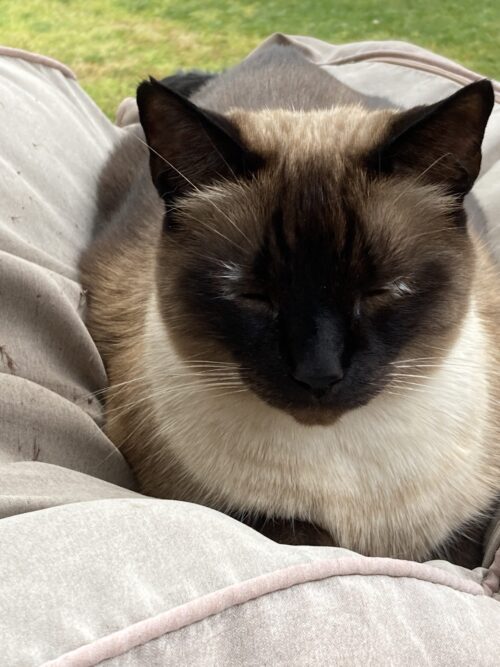
Diagnosing feline intestinal lymphoma is tricky
Feline lymphoma is the most common malignancy in cats. Gastrointestinal lymphoma (GIL) leads in diagnosis frequency, overtaking thoracic (chest cavity) forms since the advent of FeLV vaccination and FIV testing.
Large cell lymphomas – high grade – form masses and tumors in the abdominal cavity, making lying down or even sitting up uncomfortable. They are aggressive and today ultimately fatal. Small cell lymphomas are easily confused with inflammatory bowel disease (IBD) in cats. Both lymphoma forms and IBD can be difficult to diagnose but are treated identically, with tapering doses of prednisolone.
We need better diagnostic tools to distinguish IBD and intestinal lymphoma
One new tool for clinicians comes from VDI Laboratory, LLC in Chatsworth, CA. This diagnostic testing company has devised a panel of markers to differentiate signs of IBD, small cell (low grade) and large cell (high grade) gastrointestinal lymphoma. Their 12 biomarker panel (AGI-12) only needs 0.3ml of serum. By combining results from these serum proteins, the cat’s age, steroid history and signalment, this panel allows highly sensitive and specific diagnoses of client cats using AI. Chief Technology Officer, Randy Ringold, MT(ASCP), suggests their test can act as a “specialist” in clinical settings.
Paterson had a standard panel of blood tests, with an unusual finding of high numbers of eosinophils. Our only practical choice was a full ultrasound. I wish we could have spared him this lengthy procedure with a simple blood panel. The VDI Advanced GI Panel is very cost effective, comparable to traditional full blood workups. The outlook would have been the same, undoubtedly, but we would have known for sure. Hopefully feline clinicians will adopt this new tool and use it early in their assessments of GI issues in their patients.
Treatment still in the dark ages
Our clinician recommended high doses of prednisolone and a course of the commonly used and mild chemotherapy agent chlorambucil for palliative care. Had we sought veterinary care earlier in his disease, maybe this standard of care (SOC) could have bought us a few more months with our sweet guy. At his late stage, we were loath to make him potentially feel even worse.
Feline medicine lags behind canine and human medicine in terms of disease treatments. The two current SOC protocols for high grade large cell lymphomas (HGLCIL) are borrowed from decades-old drug therapies for human cancers: COP (cyclophosphamide, vincristine and prednisolone) or CHOP, which adds in doxorubicin. The drugs are administered over a 12 to 16 week combination injection schedule. Clinicians are in general agreement that cats tolerate chemotherapy better than people, but newer cat behavioral research suggests we know little about how cats actually feel.
Is surgery an option in early disease stages?
A retrospective study, published in 2019, looked at the outcomes from 40 cats diagnosed with GI lymphoma following invasive surgery to remove tumors (1). Out of 40 initial cats, 31 survived through suture removal stages. 20 of these remaining cats had complete tumor resections. The good news was that the median survival from that group was 370 days, with intestinal cases living longer. A whole extra year with our boy would have been a great gift. Unfortunately, by the time we recognized Paterson’s illness, surgery wasn’t a viable option. His abdomen was riddled with small disperse masses.
Help on the horizon
Although too late for my boy, 2022 was a banner year for promising news about some emerging treatment options in development. One of the drugs, rabacfosadine (TANOVEATM), is in clinical trials at University of Georgia (UGA Tanovea) and Colorado State University (CSU Flint Animal Cancer Center). The FDA approved this drug for canine lymphoma in July 2021. It has been widely adopted in the treatment of multiple forms of canine lymphoma with good results.
The veterinary pharmaceutical company, Anivive Lifesciences, is developing a feline specific compound (I-013512) based on their current canine drug in clinical trials. Sadly, FDA approval for either drug for cats is years away.
Repurposing human drugs is a common practice for treating feline diseases. A group in Japan reviewed results from a small group of 9 lymphoma-stricken cats treated with a DNA/RNA synthesis inhibitor; nimustine (2). Although just a small group and not divided by diagnoses, the median survival time was 510 days when the drug was started as front line therapy. I would have taken that time with Paterson!
In a twist on the traditional COP protocol, Belgium and Dutch clinicians studied fifty-six cats with high grade disease following treatment with a modified human anti-leukemia drug (3). When a pegylated version of asparaginase, pegaspargase, was added to COP treatment, 31 cats that tolerated an initial injection achieved complete remission. The median duration of disease-free survival was reported to be 816 days. Remember, median isn’t average, just the middle of the bell-shaped curve. Yet, according to the authors, some cats lived up to 2066 days. One caveat of note; cats were divided into intestinal (IL) verses gastric lymphoma (GL) and sadly, the IL group did profoundly worse than the gastric group overall.

A year to grieve
I’ve lost cats before, but the swiftness of Paterson’s disease was heartbreaking. Looking back now almost a year since he left us, I still walk by his memorial in my garden and expect to see him. His bonded brother from another mother has never quite recovered his full cattitude.
Intestinal lymphoma is a cruel disease for our feline companions and for those of us left behind. New treatments cannot come fast enough.
Studies cited
- Tidd, K. S., Durham, A. C., Brown, D. C., Velovolu, S., Nagel, J., and Krick, E. L. (2019) Outcomes in 40 cats with discrete intermediate- or large-cell gastrointestinal lymphoma masses treated with surgical mass resection (2005-2015). Vet Surg 48, 1218-1228
- Sakai, K., Hatoya, S., Furuya, M., Nabetani, T., Kanegi, R., Shimamura, S., Tani, H., and Shimada, T. (2022) Retrospective evaluation of nimustine use in the treatment of feline lymphoma. Vet Med Sci 8, 3-8
- Krupa, A., de Vos, J., Van Eetvelde, L., and Teske, E. (2022) Pegylated asparaginase in feline high-grade lymphoma: clinical results of single injection and continued incorporation into a modified COP regimen. J Feline Med Surg 24, e203-e213
Ingrid R. Niesman MS PhD is the Director of the SDSU Electron Microscope Imaging Facility at San Diego State University. She graduated from Utah State University and received her MS from the University of Illinois-Urbana-Champaign. After 30 years of technical electron microscopy, cell biology, neuroscience and infectious disease research, Dr. Niesman completed her PhD in the UK at the University of Sunderland. Her work experience includes time at LSU Medical School, Washington University, UAMS in Little Rock, UCSD, TSRI and a postdoctoral year at CALIBR in La Jolla, CA. She has worked for at least two National Academy of Science members and is credited with over 50 publications. She can be reached at [email protected]



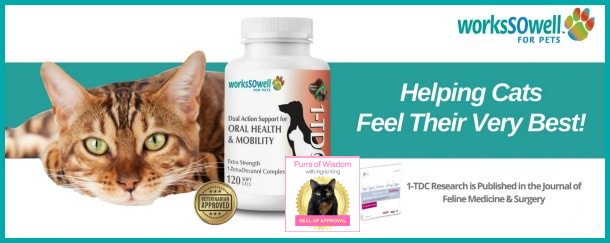

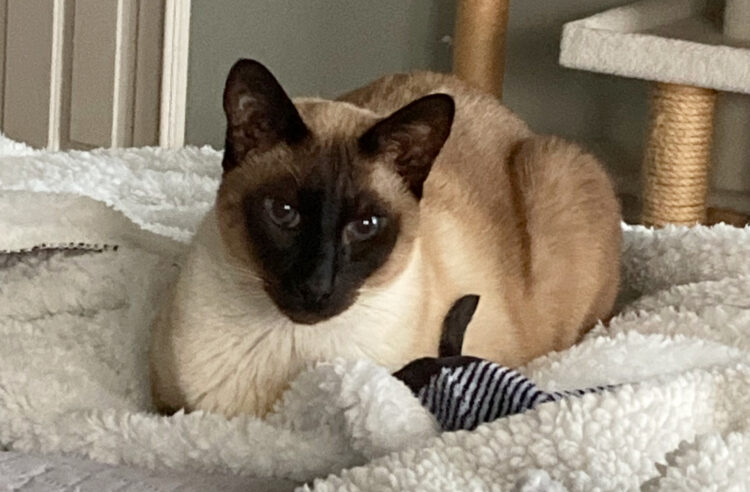
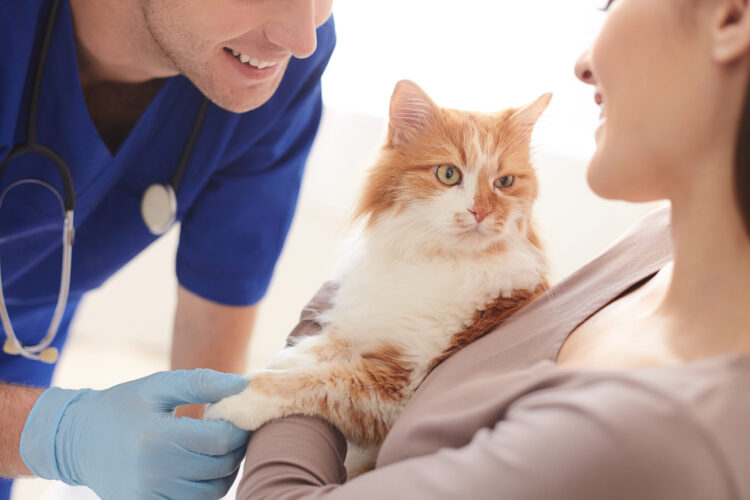
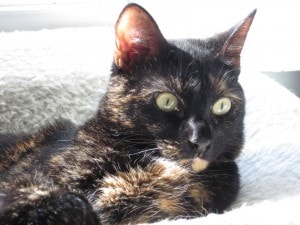
I had lost my precious boy Max at 10 in December 2021 to large cell lymphoma. My vet also misdiagnosed him, he started vomiting and pulling out fur around his stomach, she said he was just stressed. I knew that wasn’t the case, we have 3 other cats that all got along with him very well, no children, they are indoor only cats. I pushed back and said he needs an ultrasound. That’s when he was diagnosed, did a needle biopsy and it was confirmed. We tried treatment with prednisolone and chemo to see if it would help but in the end we lost our sweet baby. Then…. Not even 6 months later our other boy Tom was diagnosed with intestinal mast cell cancer! Again, vet misdiagnosed him I scheduled an ultrasound on my own doing but thankfully and by Gods grace, with chemo, he’s cancer free a year later . He still gets treatments but has great quality of life, eats, plays and we are thankful for every day with him. Vets need to not ignore the signs and offer these diagnostic tests that really should be done by a specialist that knows exactly what to look for. If it weren’t for me being persistent and just trusting what our vet said, both of these little guys would not have been diagnosed or treated. If you’re an animal lover, you know your animal and need to advocate for them.
My heart goes out to you! I had a cat who was diagnosed with mediastinal large-cell lymphoma back in 2012. She also had two other metastases in her abdomen, and maybe in other places (the specialty clinic I went to didn’t have an MRI or CT scanner). One day I had a healthy cat, and then a week later I was having her euthanized due to biopsy results (atypical large cell lymphoma) and a very poor prognosis (the tumor wasn’t responding to steroids and she’d stopped eating, so she was also on the way to developing hepatic lipidosis).
It’s sad that we couldn’t save our cats, but I have a friend whose cat had small-cell intestinal lymphoma and responded very well to treatment.
My heart goes out to you. It is so hard to lose one of our furry children. I am glad to see there is a drug trial happening that might possibly help cats in the future.
This is heartbreaking! I lost Valentine, one of two Maine Coon/Siberian cats 2 years ago. It was during covid and I have always felt that there was something happening with her that the vet missed and had it been addressed sooner, she may have lived longer. She was 13 when she died and I still miss her everyday. Her sister, Vanya is still alive, had scares with her having two seizures and was prepared for the worst but fortunately she has had no more. I did change vets after loosing Valentine.